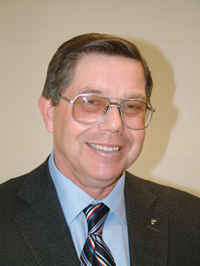
Features
Production
Research
20,000 more trees ordered removed
Another year and another round of fruit tree removals in
March 13, 2008 By Jim Meyers
Another year and another round of fruit tree removals in Niagara. The Canadian Food Inspection Agency (CFIA) last fall ordered the removal of some 20,000 more trees before bud break this spring.
More money sought for PPV eradication program
Another year and another round of fruit tree removals in Niagara. The Canadian Food Inspection Agency (CFIA) last fall ordered the removal of some 20,000 more trees before bud break this spring. So far, about 250,000 peach, apricot, plum and nectarine trees have been removed in Canada with the pullout of another 100,000 to 200,000 trees expected.
The 20,000 trees were ordered removed by the end of April. Growers won’t know until perhaps mid-June how much additional money the federal and Ontario governments are willing to put into the six-year program that so far has cost some $100,000 million (about 70 per cent of that for leaf testing), or what changes there may be in compensation for 2008. A request by some growers to hold off tree removals until additional funding was in place was denied.
 |
| Len Troup, chair of OTFPMB. |
“There’s a bit of money left to get them started this year, both for leaf testing and for grower compensation,” says Adrian Huisman, executive director of the Ontario Tender Fruit Producers’ Marketing Board (OTFPMB). Three years ago, $20 million was earmarked for ongoing leaf testing and to compensate growers and all but $3 million was used in the first two years of the Phase 2 three-year program.
It’s hoped the disease, that causes sugar loss in fruit, can be eradicated in Canada by 2011. Niagara, where the disease was discovered in 2000, is the only area still infected.
Grower survey 78 per cent in favour
Over the winter, growers were asked in a survey conducted by the OTFPMB on behalf of Agriculture Canada whether they wanted to continue a program to eradicate plum pox or change to a management program that would see the removal of infected trees and not trees surrounding diseased trees. They voted almost 78 per cent in favour of continuing an eradication program in the “expression of opinion” survey. A motion was passed at last year’s annual meeting of the tender fruit board to ask the CFIA to look at options. Not all growers voted, but those that did represented most of the acreage, CFIA horticulture specialist Blake Ferguson says.
“It’s a significant enough expression in favour to ask the treasury boards for additional funding for the program,” Huisman says.
“You can’t win on this one,” he adds. “There are growers who want to move forward (eradication) and others that say we should move to management. It all depends on the viability of their operation. The government has looked at it from the standpoint of the viability of the industry, not necessarily individual producers, and there will be individual producers who will be quite seriously affected.”
“The deal is done,” says board chairman Len Troup. “There’s no sense rehashing this a whole lot.”
He adds federal agriculture minister Chuck Strahl has accepted eradication is the direction to go and the process is underway to obtain more funding.
But a number of large growers, like John Smith of Vineland, have been against radical pullouts, preferring a slower pace towards hoped-for eradication. At this year’s annual meeting, Smith put forward a motion to use a portion of grower compensation money in the program to purchase new technology to detect PPV on individual trees that would then be removed. The motion passed.
The technology is called Direct Real Time PCR (Polymerase Chain Reaction) technology. It was developed at Agriculture and Agri-Food Canada’s Vineland Station research facility and can detect PPV on individual trees. The machines cost between $30,000 and $60,000 each and, as of yet, are not commercially available.
Smith is calling for the government to purchase enough machines to conduct testing and surgically remove infected trees and not entire blocks.
New, expensive technology
“It needs to be explored,” Huisman says of the new technology. “It’s a very good procedure in need of fine tuning.”
So far, there’s only one machine and it is designed to do 10,000 leaf tests a year. Meanwhile, about 700,000 to 800,000 PPV leaf tests were performed by laboratory technicians last year.
Board chairman Len Troup says emphasis shouldn’t be put on the motion that was passed at the meeting in Niagara. “It was an interesting discussion at this time and, even though it passed, it has no official bearing. We will pass the information along (to CFIA).”
The 20,000 trees to be removed this year are entire blocks or trees within a 50-metre radius of an infected tree. Blocks of trees (usually 800) are defined as the same variety planted the same time and the same year. The largest pullout was two years ago when 165,000 trees were removed, mostly in the Niagara-on-the-Lake growing area.
Print this page